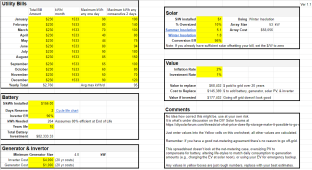svetz
Works in theory! Practice? That's something else
Example Spreadsheet now Available
First pass anyway....https://docs.google.com/spreadsheets/d/14AMvgJr2mxrx2NPxqzGxOkh3kuu4hjsc4KaJWOOP72o
Not 100% sure if you leave your edits in there if the next person can see them or not, so you might want to copy it to your own workspace....
Theoretically, all the formulas are "protected" from change, so you'll need to copy it to make any changes to them.
Feel free to modify with improvements and repost the next generation.
Last edited:



